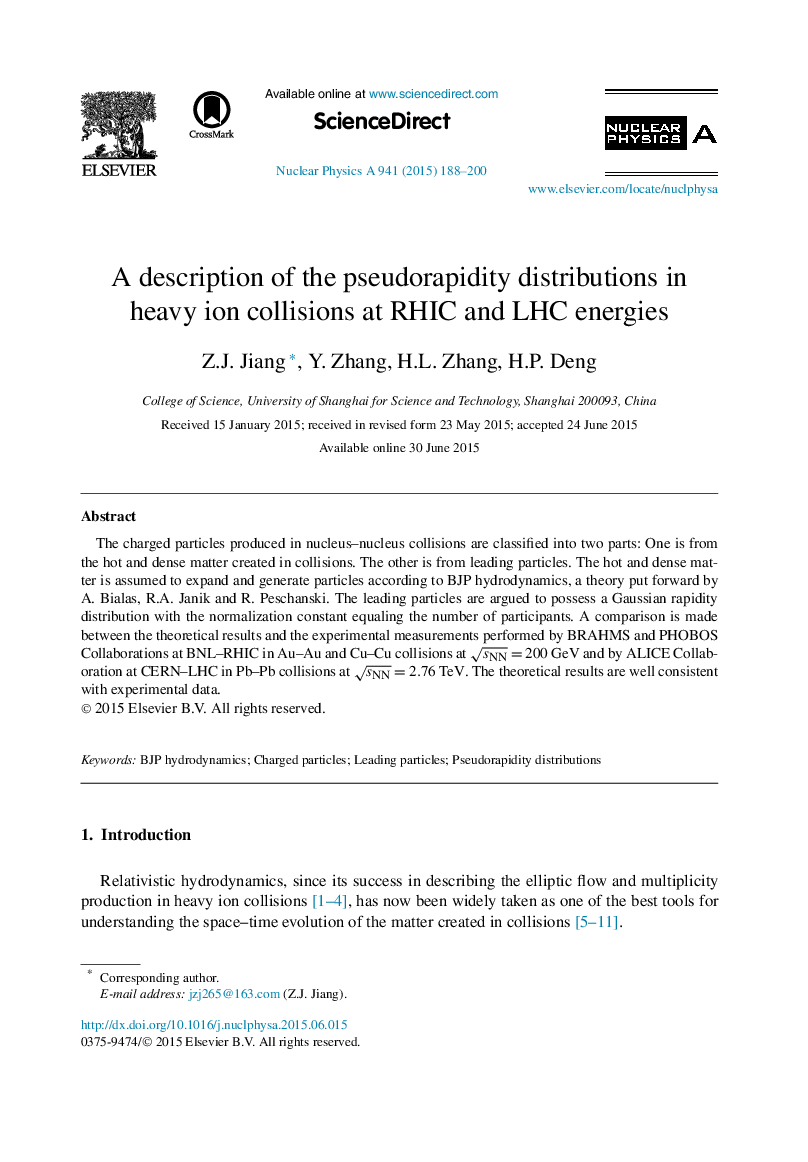| Article ID | Journal | Published Year | Pages | File Type |
|---|---|---|---|---|
| 1836861 | Nuclear Physics A | 2015 | 13 Pages |
Abstract
The charged particles produced in nucleus-nucleus collisions are classified into two parts: One is from the hot and dense matter created in collisions. The other is from leading particles. The hot and dense matter is assumed to expand and generate particles according to BJP hydrodynamics, a theory put forward by A. Bialas, R.A. Janik and R. Peschanski. The leading particles are argued to possess a Gaussian rapidity distribution with the normalization constant equaling the number of participants. A comparison is made between the theoretical results and the experimental measurements performed by BRAHMS and PHOBOS Collaborations at BNL-RHIC in Au-Au and Cu-Cu collisions at sNN=200GeV and by ALICE Collaboration at CERN-LHC in Pb-Pb collisions at sNN=2.76TeV. The theoretical results are well consistent with experimental data.
Keywords
Related Topics
Physical Sciences and Engineering
Physics and Astronomy
Nuclear and High Energy Physics
Authors
Z.J. Jiang, Y. Zhang, H.L. Zhang, H.P. Deng,
